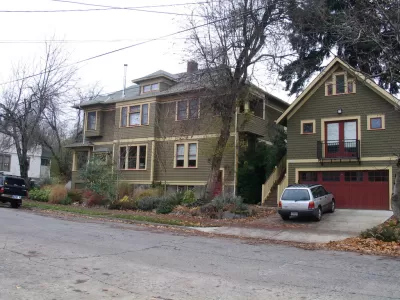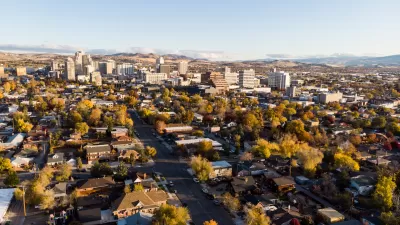Expensive West Coast cities are looking to these alternative and add-on structures to ease their housing challenges.

Haisten Willis reports on increased interest in accessory dwelling units (ADUs), especially in areas where housing prices have soared. “The West Coast has become a leader in both high housing costs and in ADU construction, with California and Oregon mandating that most cities must allow ADUs, leaving only limited power at the municipal level to legislate how the structures look and to whom they can be leased,” says Willis.
Easing regulations and, in the case of Portland, waiving development fees have helped address two of the major factors discouraging construction of ADUs. In cities advocating for ADUs, the outcomes are notable, says Willis:
San Francisco, for example, has more than 1,000 ADUs in the development pipeline, with officials looking to increase that number. Portland, Oregon, issued fewer than 100 ADU permits as recently as 2010. In 2016, the number surged past 600 permits in a single year and could soon surpass the number of new homes under construction.
In Sun Belt cities where housing prices have not peaked and denser East Coast cities, the future of ADUs is less clear. But in lower-density cities in the West facing rising housing costs, ADUs are an ideal alternative for homeowners to supplement their income and for renters to find more affordable housing.
FULL STORY: One answer to the lack of affordable apartments might begin at home

Maui's Vacation Rental Debate Turns Ugly
Verbal attacks, misinformation campaigns and fistfights plague a high-stakes debate to convert thousands of vacation rentals into long-term housing.

Planetizen Federal Action Tracker
A weekly monitor of how Trump’s orders and actions are impacting planners and planning in America.

San Francisco Suspends Traffic Calming Amidst Record Deaths
Citing “a challenging fiscal landscape,” the city will cease the program on the heels of 42 traffic deaths, including 24 pedestrians.

Defunct Pittsburgh Power Plant to Become Residential Tower
A decommissioned steam heat plant will be redeveloped into almost 100 affordable housing units.

Trump Prompts Restructuring of Transportation Research Board in “Unprecedented Overreach”
The TRB has eliminated more than half of its committees including those focused on climate, equity, and cities.

Amtrak Rolls Out New Orleans to Alabama “Mardi Gras” Train
The new service will operate morning and evening departures between Mobile and New Orleans.
Urban Design for Planners 1: Software Tools
This six-course series explores essential urban design concepts using open source software and equips planners with the tools they need to participate fully in the urban design process.
Planning for Universal Design
Learn the tools for implementing Universal Design in planning regulations.
Heyer Gruel & Associates PA
JM Goldson LLC
Custer County Colorado
City of Camden Redevelopment Agency
City of Astoria
Transportation Research & Education Center (TREC) at Portland State University
Jefferson Parish Government
Camden Redevelopment Agency
City of Claremont





























